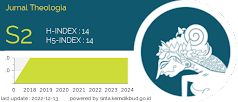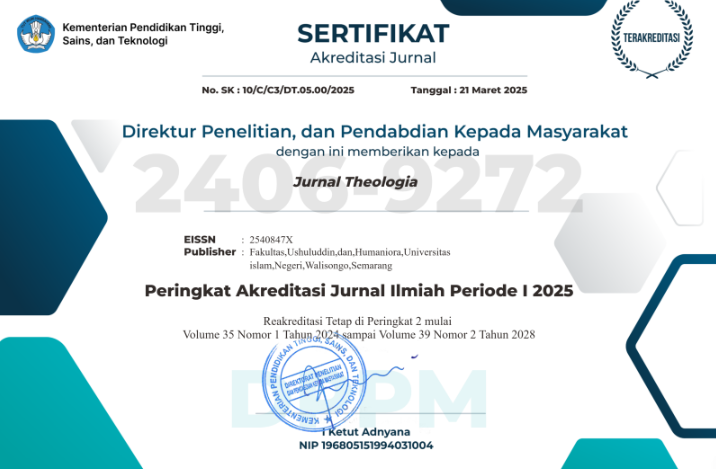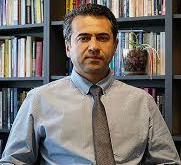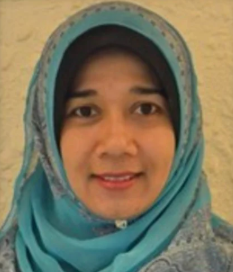Prophetic Ethics of Inclusion and Conflict Resolution: A Neo-Traditionalist Interpretation of the Sirah
DOI:
https://doi.org/10.21580/teo.2025.36.1.26623Keywords:
Prophetic Sirah, Neo-traditionalist Approach, Social Inclusiveness, Conflict Resolution, Interreligious HarmonyAbstract
In an era marked by escalating religious intolerance and social fragmentation, the ethical legacy of the Prophet Muhammad (Sirah) offers a compelling yet underexplored framework for promoting peaceful coexistence. Despite its rich content, contemporary discourse often marginalises the inclusive and reconciliatory dimensions of the Prophet’s life. This study aims to examine how neo-traditionalist Muslim scholars—particularly from the West and the Indian subcontinent—interpret the Sirah to address issues of social inclusiveness and conflict resolution. Employing a qualitative descriptive method, this research integrates content analysis, thematic exploration, and comparative interpretation. It focuses on key historical events such as Hilf al-Fudul, the Constitution of Medina, the migration to Abyssinia, the Treaty of Hudaybiyyah, and the Conquest of Makkah. The findings show that neo-traditionalist scholars present a contextual and ethical reading of the Sirah that aligns classical Islamic values with modern challenges. This study contributes to the growing field of peace studies in Islam by reviving the Prophet’s ethical model as a viable framework for interfaith harmony, minority rights, and conflict transformation in pluralistic societies.
Downloads
References
Aadil Hussain Wagay. (2022). Interfaith Dialogue: A Qur’anic Cum Prophetic Perspective. Karachi Islamicus, 2(2), 14–27. https://doi.org/10.58575/ki.v2i2.24
Abbink, J. (2020). Religion and Violence in the Horn of Africa: Trajectories of Mimetic Rivalry and Escalation between ‘Political Islam’ and the State. Politics, Religion & Ideology, 21(2), 194–215. https://doi.org/10.1080/21567689.2020.1754206
Abu Bakar, A., & Qureshi, R. (2020). Civic Rights in Charter of Madinah and International Human Rights Conventions: A Comparative Study. Al-Milal: Journal of Religion and Thought, 2(2), 196–211. https://doi.org/10.46600/almilal.v2i2.153
Abu-Nimer, M. (2003). Nonviolence and peace building in Islam: Theory and practice. University Press of Florida Gainesville.
Akbar, A., & Saeed, A. (n.d.). The Qur’ān and Social Inclusivism: An Analysis of Q 5: 51.
Al-Khaiat, M. H., & Kadir, F. K. A. (2019). The Phenomenon of Terrorism and Its Remedy in the Light of the Values of Islamic Preaching. International Journal of Academic Research in Business and Social Sciences, 9(2). https://doi.org/10.6007/IJARBSS/v9-i2/5521
Al-Mubarakpuri, S. R. (1995). Ar-Raheeq Al-Makhtum (The Sealed Nectar). Maktaba Dar-Us-Salam Publishers.
Anello, G. (2021). The Concept of “Contractual Citizenship” in the Charter of Medina (622 C.e.): A Contemporary Interpretation. SSRN Electronic Journal. https://doi.org/10.2139/ssrn.3784632
Aslam, A., & Ur Rehman, Dr. G. S. (2022a). The Objectives and Styles of Quranic Sirah-Writing: An Illstrative Study. ĪQĀN, 4(2), 21–39. https://doi.org/10.36755/iqan.v4i2.389
Aslam, A., & Ur Rehman, Dr. G. S. (2022b). The Objectives and Styles of Quranic Sirah-Writing: An Illstrative Study. ĪQĀN, 4(2), 21–39. https://doi.org/10.36755/iqan.v4i2.389
Aslmi, D. N. A., & Muhammad Irfan Ahmad. (2023). بين الاقوامی قانون کی تشکيل : امام ابو حنيفہ کے افکار سے استفادہ کی ضرورت. Al Basirah, 11(2), 1–22. https://doi.org/10.52015/albasirah.v11i2.88
Azmi, A. S. (2019). The Hybrid Nature of Sirah Nabawiyyah: An Analysis of Quranic Biography of Muhammad’s Early Lifeife. UMRAN - International Journal of Islamic and Civilizational Studies, 6(1), 31–38. https://doi.org/10.11113/umran2019.6n1.255
Bensaid, B. (Corresponding A., & Machouche, S. (2019). MUSLIM MORALITY AS FOUNDATION FOR SOCIAL HARMONY. Journal of Al-Tamaddun, 14(2), 51–63. https://doi.org/10.22452/JAT.vol14no2.5
Cole, J. (2018). Muhammad: Prophet of Peace Amid the Clash of Empires. Hachette UK.
Dogan, R. (2014). Conflict Resolution Forms in the Life of Prophet Muhammad. International Journal of Religion and Spirituality in Society, 4(2), 9–19.
Edaibat, O. (2018). Fostering World Peace Through ‘Cultures of Meaning’: A Case Study of Shaykh Hamdi Ben Aissa and the Sanad Collective. Sunan Kalijaga: International Journal of Islamic Civilization, 1(2), 139–169. https://doi.org/10.14421/skijic.v1i2.1363
Elman, M. F., & Shams, R. Z. (2022). “We Are Cousins. Our Father Is Abraham…”: Combating Antisemitism and Anti-Zionism with the Abraham Accords. Religions, 13(10), 901. https://doi.org/10.3390/rel13100901
Elsayed Said Ahmed, R. (2022a). The Royal Texts of the History of Abyssinia During the Reign of Emperor Amda Seyon (1314-1344): Translation and Analytic Study. TSU-Ti — THE INTERNATIONAL SCIENTIFIC JOURNAL OF HUMANITIES (Ed. Nana Gaprindashvili), 1. https://doi.org/10.55804/Elsayed
Elsayed Said Ahmed, R. (2022b). The Royal Texts of the History of Abyssinia During the Reign of Emperor Amda Seyon (1314-1344): Translation and Analytic Study. TSU-Ti — THE INTERNATIONAL SCIENTIFIC JOURNAL OF HUMANITIES (Ed. Nana Gaprindashvili), 1. https://doi.org/10.55804/Elsayed
Farman, M., & Yucel, S. (2023). Rereading the Hudaybiyya Treaty: With Special Reference to Ibn ʿUmar’s Role in Fitan. Religions, 14(5), 666. https://doi.org/10.3390/rel14050666
Fennane, K. B. (2003). Reflections on the principle of continuity on the basis of Ibn al-Haytham’s commentary on Proposition I.7 of Euclid’s Elements. Arabic Sciences and Philosophy, 13(1), 101–136. https://doi.org/10.1017/S0957423903003059
Ghasemi Shub, M., Shahroodi, M. R., & Ayazi, S. M. A. (2020). Political Negotiation, Principles, and Purposes: Rereading the Biography of the Holy Prophet of Islam (PBUH)(Case study: Treaty of Hudaybiyyah). Iranian Journal for the History of Islamic Civilization, 53(1), 7–32.
Halilović, S. (2012). Traditional movements in the contemporary Arab world. Kom : Casopis Za Religijske Nauke, 1(1), 97–111. https://doi.org/10.5937/kom1201097H
Hamid, E. A. (2016). The Politics of the Two Qiblahs and the Emergence of an Alternative Islamic Monotheism. American Journal of Islam and Society, 33(1), 67–91. https://doi.org/10.35632/ajiss.v33i1.231
Hamidullah, M. (1975). The first written constitution in the world: an important document of the time of the Holy Prophet. Sh. Muhammad Ashraī.
Huda, Q. (2010). Crescent and dove: Peace and conflict resolution in Islam. US Institute of Peace Press.
Jabal Muhammad Buaben. (2002). Image of the Prophet Muhammad in the West A Study of Muir, Margoliouth and Watt. Islamic Foundation.
Jaffrelot, C., & A., K. (2023). Indian Muslims: Varieties of Discriminations and What Affirmative Action Can Do. In Handbook on Economics of Discrimination and Affirmative Action (pp. 1–22). Springer Nature Singapore. https://doi.org/10.1007/978-981-33-4016-9_26-3
Khalid Saifullah Rehmani. (2008). Payām-e-Sīrat: ‘Asr-e-Ḥāẓir ke Pas Manẓar Mein [Message of the Sirah in the Context of Contemporary Times] (Muhammad Jamil Akhtar Nadwi, Ed.). Daccan Traders.
Khan, M. W. (2009). The Prophet of Peace: Teachings of the Prophet Muhammad. Penguin UK.
K̲h̲ān̲, V. (2002). Islam rediscovered: Discovering Islam from its original sources. goodword.
Khan, W. (1999). Mutala e Seerat: Seerat e Rasool ka Ilmi wa Tarikh e Pehlu. Maktaba Ar-Risala.
Kidwai, A. R. (2019). Images of the Prophet Muhammad in English Literature. American Journal of Islamic Social Sciences 36-4: Fall 2019, 36, 125.
Kirazli, H. S. (2024). Conflict resolution and peacemaking in Islam: theory and practice. Springer Nature.
Kurzman, C. (1998). Liberal Islam: a source book. Oxford University Press.
Massad, J. (1997). Image of the Prophet Muhammad in the West: A Study of Muir, Margoliouth and Watt. JSTOR.
Parray, T. A. (2019). Images of the Prophet Muhammad in English Literature: By Abdur Raheem Kidwai (New York: Peter Lang, 2018. 168 pages.). American Journal of Islam and Society, 36(4), 125–128.
Parray, T. A. (2024a). Perspectives on interpreting Islam in the contemporary Indo-Pak subcontinent: issues and trends.
Parray, T. A. (2024b). Perspectives on interpreting Islam in the contemporary Indo-Pak subcontinent: issues and trends.
Quisay, W. (2023). Neo-traditionalism in islam in the west: Orthodoxy, spirituality and politics. Edinburgh University Press.
Ramadan, T. (2007). In the Footsteps of the Prophet: Lessons from the Life of Muhammad. Oxford University Press.
Rose, P. L. (2011). Muhammad, The Jews and the Constitution of Medina: Retrieving the historical Kernel. Islm, 86(1), 1–29. https://doi.org/10.1515/islam.2011.012
Saeed, A. (2022). Inclusivism and Exclusivism among Muslims Today between Theological and Social Dimensions. JSTOR.
Saeed, M. H. (2023). The concept of justice in Islam – by confirming Ibn Khaldun views. Halabja University Journal, 8(2), 168–185. https://doi.org/10.32410/huj-10470
Saeidi, S. (2022). Hizbollah in the Global Arena. In Oxford Research Encyclopedia of International Studies. Oxford University Press. https://doi.org/10.1093/acrefore/9780190846626.013.679
Said, A. A., Funk, N. C., & Kadayifci, A. S. (2001). Peace and conflict resolution in Islam: precept and practice. Univ. Press of America.
Salahi, A. (2010). Muhammad: Man and Prophet. Kube Publishing Ltd.
Salahi, A. (2014). Muhammad: His character and conduct. Kube Publishing Ltd.
Schmalkuche, C. (2011). When the moon split: a biography of Prophet Muhammad. Lutheran Theological Journal, 45(1), 65.
Serjeant, R. B. (1964). The’Constitution of Medina’. Islamic Quarterly, 8(1), 3.
Sertkaya, S. (2022). A Critical and Historical Overview of the Sīrah Genre from the Classical to the Modern Period. Religions, 13(3), 196. https://doi.org/10.3390/rel13030196
Sertkaya, S. (2023). Sīrah Philosophy: A Modern Trajectory for Sīrah Studies. Religions, 14(11), 1440. https://doi.org/10.3390/rel14111440
Sertkaya, S., & Keskin, Z. (2020). A prophetic stance against violence: An analysis of the peaceful attitude of Prophet Muhammad during the Medinan period. Religions, 11(11), 587.
Siddiqi, M. Y. M. (2016). The Prophet Muhammad: A Role Model for Muslim Minorities. Kube Publishing Ltd.
Sofi, M. D., & Parray, T. A. (2016). Reinterpreting Mi̇̄thāq al-Madi̇̄nah: A Study of Some Contemporary Scholars. The Journal of Rotterdam Islamic and Social Sciences, 7(1), 1–10.
Supriadi, U., & Islamy, M. R. F. (2023). Development of Sīroh An-Nabawiyyah Learning Media in Fiqh Siroh Ramadhan Al-Buthi Through the Concept of NPT (Narative, Pedagological, and Theological). JHSS (JOURNAL OF HUMANITIES AND SOCIAL STUDIES), 7(1), 072–081. https://doi.org/10.33751/jhss.v7i1.7388
Tasgheer, A. (2022). ISLAMIC PRINCIPLES OF DIPLOMATIC STRATEGIES FOR CONFLICT RESOLUTION: DRIVERS OF SUSTAINABLE PEACE. The Scholar Islamic Academic Research Journal, 8(1). https://doi.org/10.29370/siarj/issue14aren3
Tolan, J. (2019). Faces of Muhammad: Western perceptions of the prophet of Islam from the Middle Ages to today. Princeton University Press.
Wani, N. U. I. (2023). Peace and conflict resolution in Islam: A perspective building. Indonesian Journal of Interdisciplinary Islamic Studies (IJIIS).
Downloads
Published
How to Cite
Issue
Section
License
Copyright (c) 2025 Danish Nabi, Tauseef Ahmad Parray

This work is licensed under a Creative Commons Attribution-NonCommercial-ShareAlike 4.0 International License.




















